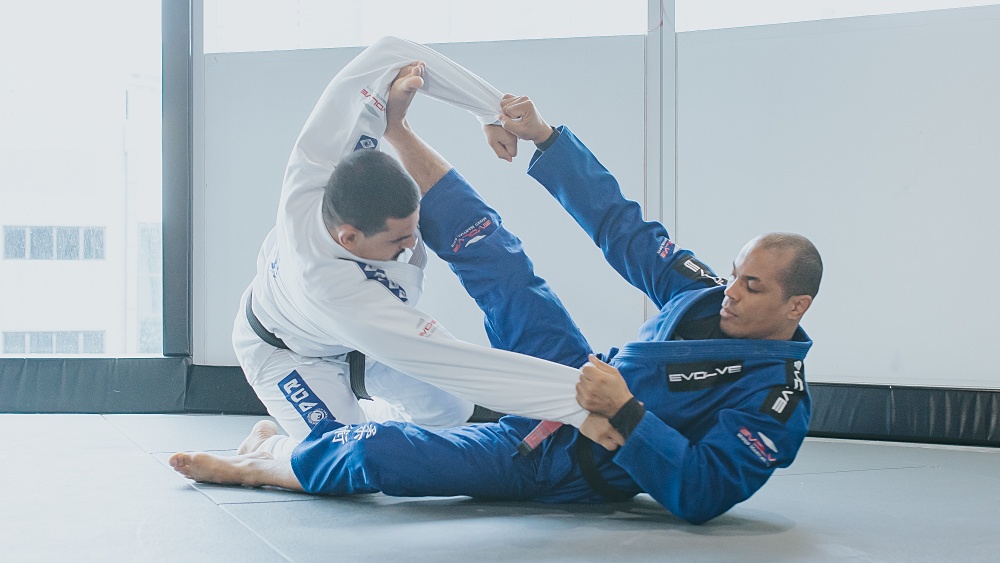Brazilian Jiu-Jitsu is one of the few martial arts out there that stays highly effective regardless of one’s physical ability. The secret to this is that it’s not about overpowering your opponent with sheer strength but outsmarting them with superior technique and leverage. This aspect of BJJ becomes increasingly relevant for older grapplers who, while they might not have the same physical prowess as their younger counterparts, possess a wealth of knowledge and experience that can be effectively utilized on the mats. Today, we will go over some of the best guards for the older grappler.
Playing Guard As An Older Grappler
While playing the top position is still the most preferred position in grappling, all practitioners will inevitably get swept and taken down in training, especially when dealing with younger and faster training partners. With this, selecting guard techniques that can help you stay safe while grappling on the mat is imperative. For older practitioners, choosing the easy-to-use but still very effective guards is a must. Below are some of our top recommendations.
1) Closed Guard
The closed guard lays the foundation for a defensive strategy that allows older practitioners to control the pace of the match. By maintaining this position, you can effectively manage your energy, choosing when to attack or bide your time. This guard is particularly beneficial as it reduces the risk of injury, which is a crucial consideration for older grapplers. By emphasizing control and patience, the closed guard allows for a thoughtful, strategic approach to BJJ, aligning with the physical and mental attributes that typically strengthen with age. There are many styles of playing the closed guard (overhook, clamp, side closed, etc.), but even the most basic variation should be good enough as it provides a lot of stability for as long as you use it properly.
2) Half-Guard
Transitioning from the closed guard, the half-guard offers a different set of opportunities and challenges. This position is exceptionally versatile, providing older grapplers with defensive security and offensive potential. The half-guard effectively slows aggressive opponents, allowing the older grappler to work on sweeps and transitions at their own pace. It’s a testament to the adaptability required in BJJ, as practitioners must continually assess and respond to their opponent’s actions. There are many variations of half-guards to choose from. Among them, the knee shield or Z half-guard stands out as the best in terms of ease of use and defensive/offensive potential.
The evolution of guard techniques has made the butterfly guard increasingly popular among practitioners who prefer a more dynamic approach. This guard is excellent for setting up sweeps and allows for mobility that can be adjusted based on the practitioner’s physical capabilities. The beauty of the butterfly guard for older grapplers lies in its efficiency and the minimal amount of movement required to be effective. It teaches practitioners the importance of timing and the use of leverage, which are fundamental principles that underpin BJJ. You can use the butterfly guard in Gi and No-Gi grappling. Don’t forget to utilize sleeve and belt grips when playing the butterfly guard in the Gi, as they make it a much more powerful position.
4) Spider Guard
The classic spider guard allows grapplers to control the distance and pace of the fight, which are crucial aspects for older grapplers who may need to manage their exertion levels carefully. This guard emphasizes using the legs and grips to manage the opponent, a useful skill that reduces the need for rapid, strength-based movements. The spider guard also introduces older grapplers to a more nuanced aspect of BJJ, where strategy and foresight play pivotal roles in controlling the match. While the classic spider guard position typically refers to the feet on the arms variant, you can also employ the lasso spider guard, as it is a super helpful position to slow down even large opponents.
The De La Riva guard continues the theme of control and strategy. It’s particularly effective in dealing with aggressive opponents, allowing practitioners to off-balance (Kuzushi) them and create openings for attacks. For older grapplers, mastering the De La Riva guard can open up new avenues for controlling the match by using it to stop the guard pass or opening up opportunities to go for sweeps. Admittedly, the DLR is not as easy to use in No-Gi grappling, so it is best to use this guard when playing the Gi.
Finally, the deep half-guard is a safeguard for older practitioners to use, providing a buffer against more aggressive opponents while presenting opportunities to unsettle and sweep them. This position underscores a key philosophy within BJJ: the idea that being at the bottom does not equate to being at a disadvantage. For older grapplers, the deep half-guard can epitomize the cerebral nature of BJJ, where knowledge, experience, and technique converge to offer a path to success.
Conclusion
In conclusion, Brazilian Jiu-Jitsu is an excellent avenue for practitioners of all ages to learn, grow, and compete. For older grapplers, the art offers a way to stay active, engage the mind, and apply a lifetime of learning. The six guards discussed – closed guard, half-guard, butterfly guard, spider guard, De La Riva guard, and deep half-guard – represent just a fraction of the techniques available but are particularly suited to those looking to adapt their game as they age. They offer a mix of control, defense, and offensive potential that can be tailored to suit the individual’s physical condition and grappling style.
Older grapplers bring a unique perspective to Brazilian Jiu-Jitsu, informed by years of experience and understanding. By focusing on efficient guards, they can continue to enjoy the sport, facing and overcoming challenges on the mats with grace, wisdom, and the unyielding spirit that defines BJJ. The journey in Brazilian Jiu-Jitsu is lifelong, and for the older practitioner, it’s a journey marked by adaptation, perseverance, and the ongoing pursuit of knowledge.
You may also like:

















